A Few Good Tom Cruise Credits
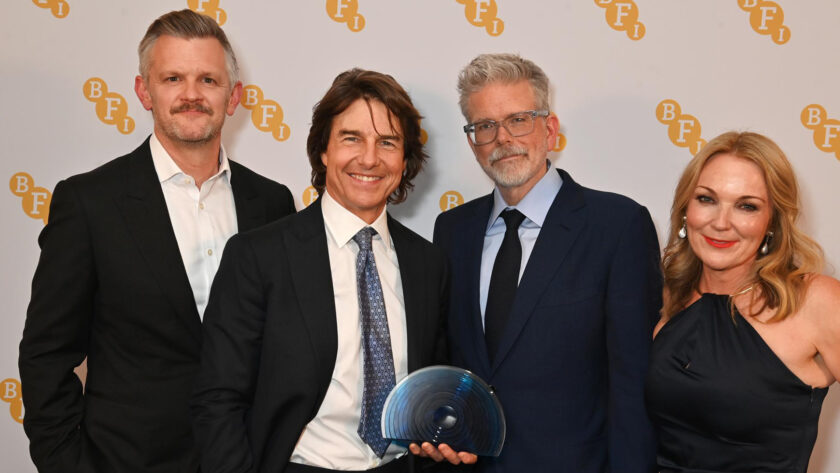
Tom Cruise never stops. Fresh from the cover of the June Sight and Sound, his latest mission has been to accept a BFI Fellowship, while this month has seen the release of Mission: Impossible The Final Reckoning (2025), as well as a special season of 28 of his most celebrated films, running throughout May at BFI Southbank and BFI IMAX.
Behind the scenes, our BFI database has been endeavouring to keep up with him.
Throughout the season, the Programme Notes given to audiences at BFI Southbank have, as ever, featured some illuminating text about the film alongside a substantial list of the film’s credits, to satisfy your curiosity and complete your enjoyment. These credits (covering companies, cast and crew) are drawn from our database, CID, our national magnum opus of filmographic information, on which dedicated Data Editors toil every day, retaining for posterity an ever-growing portrait of this cherished corner of our culture.
Cataloguing practices do change over time, not least as technology develops, and the Tom Cruise season was an opportunity we couldn’t resist; we seized on the chance to check over our BFI records of all the season’s films line by line, in order to spruce them up where required. Older stylistics were duly brought up to current standards, and we ironed out any anomalies stemming from outmoded cataloguing methods or now happily extinct technical restrictions. It was a rewarding process.

The good news is that we were struck by the impressive scale of the records; CID is certainly armed to stand the test of time, with its massive, detailed legacy of credits, where extensive crew lists jostle with full company credits and complete casts. It was gratifying to note that the most recent records had indeed been created, as you might hope, with thoroughly modern aplomb, and the likes of Top Gun Maverick (2022) or Mission: Impossible Fallout (2018), being already ship-shape, required no tweaks.
What did need our attention – and patience – was the way certain information had (necessarily) been recorded on our older databases. For instance, on SIFT (in use from the 1970s into the early 2000s), we had a limited number of characters available to type in an onscreen credit. For lengthy job titles, the only option was to pack in as much info as possible using ingenious (or occasionally desperate) abbreviations, and hope for the best. As we combed over the Tom Cruise records, we painstakingly expanded back to their full wording hundreds of abbreves on the lines of “Sup” (to Supervisor/Supervising, as in The Last Samurai), “Co” (Co-ordinator, War of the Worlds), “Add” (Additional, A Few Good Men), “Prod” (Production, Valkyrie), “Undwt” (Underwater, Top Gun), “Phil” (Philippines, Born on the Fourth of July), “Footb Seqs” (Football Sequences, Jerry Maguire) or “2U Aus” (2nd Unit Australia, Mission: Impossible II).
Also ungainly was some old-school inconsistency with capital letters. Today, inputters agree that crew jobs take upper-case initials, while character roles are by default lower-case. We found no shortage of credits such as “Hair and make-up artist” or “Sound effects editor” which needed amending to “Hair and Make-up Artist” or “Sound Effects Editor”, while in the cast list, many a ‘Gate Guard’ or ‘Bartender’ was renamed a ‘gate guard’ or ‘bartender’.

The most abstruse consideration involved the heavy use of brackets which for many years was a key inputting ploy designed to streamline the monthly process of formatting credits extracted from CID for publication in Sight and Sound. (This was back in the days when very extensive credits appeared in the magazine.) We found that it was not always worth removing these brackets, since the work would be fiddly and unjustifiably time-consuming – especially since “Assistant Director (2nd)” has about the same clarity as “2nd Assistant Director”.
Over a career as illustriously long as Tom Cruise’s, it is perhaps not too surprising that we might hit on one case where a film’s record had, ahem, somewhat fallen through the cracks, and, shall we say, enjoyed a less than robust showing on the database. At the time of this (relatively unsung) film’s release, the distributor had not quite managed to find for us a copy of the complete onscreen main and end credits that we aimed (as always) to work from, and over time, the record languished in rather a sorry state. Our checking project alerted us to this dismaying deficit, and, working from a home entertainment copy of the film, we swiftly rectified it, so today a record of CID’s customary calibre can (finally) be consulted.
A database is a living thing, and it has been very worthwhile giving the records of the Tom Cruise season a proper brush-up so they are in peak condition to fulfil their purpose: namely, to recognise (and to introduce viewers old and new to) the work not just of Tom Cruise, but of the hundreds of skilled filmmakers whose expert contributions combine to create those enduring milestones of popular cinema which we love to watch time and again.
– Patrick Fahy, Documentation Team Leader
Jeanne Dielman at 50: The Cannes 1975 festival files
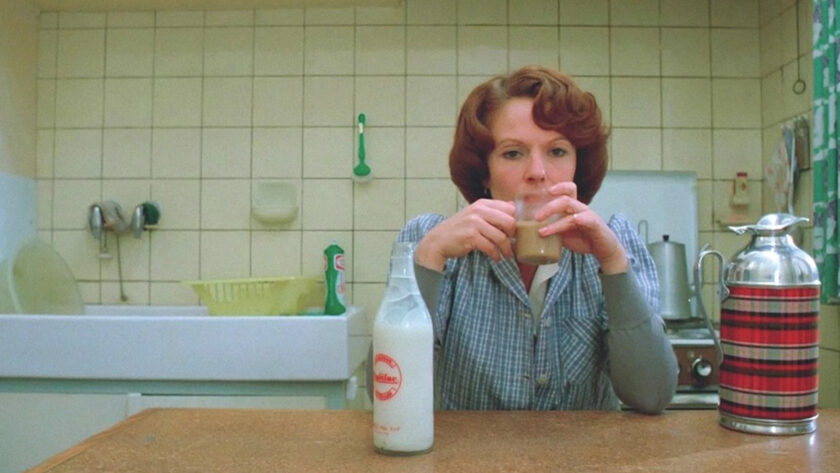
Cannes is over for another year, and the prizes have been awarded. A Simple Accident won the Palme d’Or and Hasan Hadi’s The President’s Cake won Cannes’ newest prize, the Choix du Public. The award was introduced last year as the festival’s first audience choice award. The winner is chosen from films shown during the Directors’ Fortnight; an independent offshoot of the festival, established in 1969, by the Society of Film Directors (SRF). Hadi has been awarded €7,500 funded by the Fondation Chantal Akerman. And we can understand the origins of this award better using the BFI Reuben Library’s festivals collection.
The BFI has been collecting publications from and about film festivals around the world for over ninety years; before there even was a Cannes Film Festival. Chantal Akerman’s relationship with the Directors’ Fortnight began fifty years ago; at Cannes 1975 with her second feature, and Sight and Sound’s current Greatest Film of All Time, Jeanne Dielman, 23 Quai du Commerce, 1080 Bruxelles. We have a copy of that year’s call for submissions with application form. It’s written in French, English and Spanish to help the SRF achieve its international ambitions. Its ‘Mai 68’ inspired slogan is prominent: Cinéma en liberté. The Fortnight promotes freedom of self-expression, and freedom from moral and market forces: it “aims to give the opportunity to different tendencies of the contemporary films to express themselves without any restriction”. Conditions for participation are given, and they exclude films that had already been shown commercially in France, at other European festivals or elsewhere at Cannes before its screening.
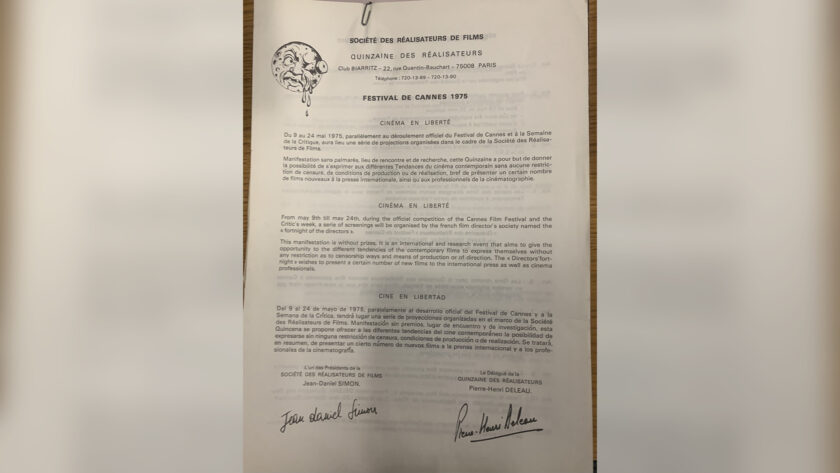
Jeanne Dielman qualified and was included in the Directors’ Fortnight’s programme. Pierre-Henri Deleau, the Fortnight’s co-founder and in charge of film selection, writes in its profile: “one exacting preoccupation: the flash of talent, three seconds (that is a lot) of genius”. However, audiences were anticipating a lot more than that from Jeanne Dielman. Akerman had miscalculated its running time, and it’s billed in the printed programme as lasting three hours and forty-five minutes. Shorter than the longest film in the selection, The Travelling Players, but twenty-three minutes longer than its actual length. All films were to be shown at the Star Cinema; near the Croisette and the festival’s hub, the Palais des Festivals.
Cannes that year was rocked by terrorist attacks. Our Cinema TV Today Cannes daily special reports that on 9 May, at 4am, a bomb exploded in the Palais des Festival just before it started. You can watch newsreels from British Pathé’s archive of the damage done to the artists’ entrance and the Palais’ shattered windows. Festival security was increased but the show went on: “The explosion didn’t keep anyone away […] M. Touzet, the festival administrator, said he expected the repairs to be completed by the time of the inauguration”. Another two bombs went off during the festival; one in the Palais’ Casino early in the morning of Friday 23 May before the closing awards ceremony. A cutting from Italian paper Corriere della Sera identifies the bomber, the only fatality, as 21-year-old French man Jean-Luc Milan.
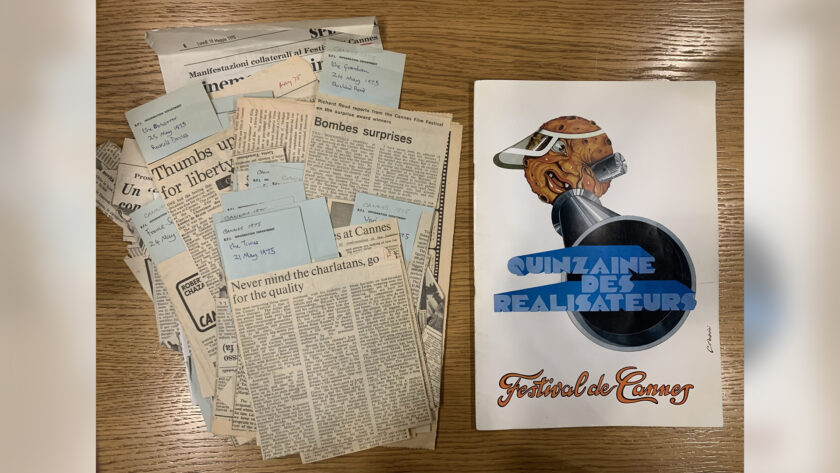
Though they caused damage, the bombs didn’t threaten festival-goers’ safety. Our press cuttings show that several copywriters found the punning opportunities irresistible: “there have been no shortage of jokes about the 1975 Cannes Film Festival starting off with a bang” writes Nigel Andrews in the Financial Times. Especially when reporting that year’s row between the Directors’ Fortnight organisers and the International Federation of Film Press (FIPRESCI). Films in the Fortnight didn’t qualify for the FIPRESCI prize because it was limited to films shown in the Palais des Festivals. Towards the end of the fortnight, and the day before Jeanne Dielman’s premiere, Deleau and associates had an open letter published in Film Français. Written in French and English, it details and petitions the decision that had been made during FIPRESCI’s general assembly the month before. Though itself non-competitive, the Fortnight’s organisers thought it unfair to exclude its emerging talent from wider critical attention and acclaim: “outside of the Church ; no hope of salvation. If clothes make the man in Cannes, the screening room makes the film”. The Enigma of Kaspar Hauser won.
Jeanne Dielman was one of seventy-five screenings scheduled on Thursday 22 May; the donor of our Cinema TV Today special from that day has underlined its 8pm showing. It benefitted from a front page feature in Film Français’ daily bulletin: “Chantal Akerman: from the underground to Cannes”. It describes Akerman’s precocious talent: “she turned 25 the month before but made her first film at 18…”. Akerman’s Toulon festival prize is mentioned in the Fortnight’s programme, and we get more information here: “she received a prize for Hotel Monterey … shot for less than 10,000 F in New York”.
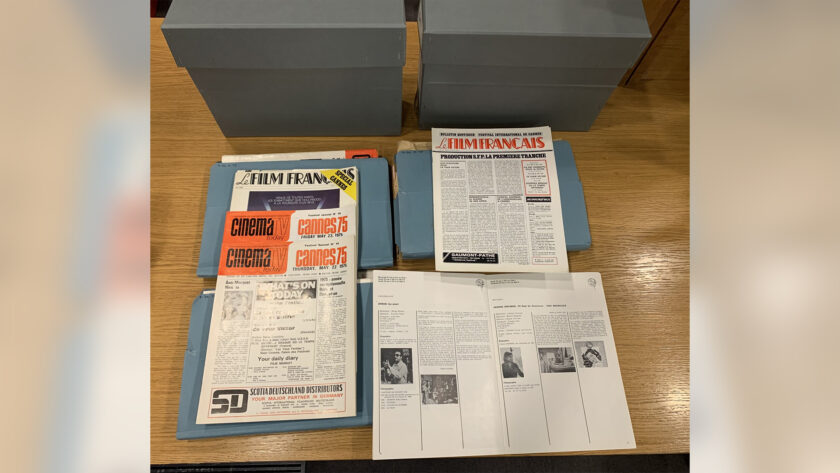
As well as production details, it describes her work with Jeanne Dielman’s star, Delphine Seyrig. Seyrig was at Cannes that year with six films; three in competition. Her non-film commitments appear the day before Jeanne Dielman’s first screening. She is listed, with other feminist filmmakers and stars, expressing solidarity with Eva Forest and other anti-Franco prisoners; prompted by the French publication of Forest’s “From a Spanish Prison” by Editions des Femmes. Seyrig’s high visibility paid off. Albert Johnson’s Cannes dispatch, in the collection, mentions she was awarded a “Jury Salute” for her work with new filmmakers in the closing ceremony. Her film with Marguerite Duras, India Song, won the Prix AFCAE. France-Soir’s report the next day has the subheading: “Delphine Seyrig omniprésente” and praises her career renaissance. The Telerama Cannes Special dubbed that year’s festival “a kind of consecration” for her.
Akerman supported the Director’s Fortnight throughout her career as a place to develop new and underrepresented cinematic talent. She showed subsequent films there: from the Golden Eighties (1986) – available on the BFI Player – to her short Tombée de nuit sur Shanghaï (2007).
– Adrienne Rashbrook-Cooper, Collection Projects Assistant Librarian
The Inside the Archive blog is supported by the BFI Screen Heritage Fund, awarding National Lottery funding.
